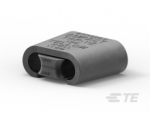CaveCreekRay
Well-known member
Lifetime Member
Equipment
L3800 HST, KingKutter box scraper, KingKutter 66" rake, County Pride Subsoiler
Len,
Are you feeling OK buddy?
Of course you realize this is an awesome reason to put a nice low-time trencher on your radar so you can justify the purchase! LOL!!!! You NEED one for your stable of equipment.
There is one parked in downtown Cave Creek for sale. Its the size of a small Kubota so it would cost me a bundle to mail it. I thought a half second about buying it. I have 1000' of irrigation water line I need to trench in the next couple of weeks.
Good luck!

Are you feeling OK buddy?
Of course you realize this is an awesome reason to put a nice low-time trencher on your radar so you can justify the purchase! LOL!!!! You NEED one for your stable of equipment.
There is one parked in downtown Cave Creek for sale. Its the size of a small Kubota so it would cost me a bundle to mail it. I thought a half second about buying it. I have 1000' of irrigation water line I need to trench in the next couple of weeks.
Good luck!





